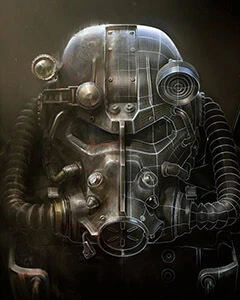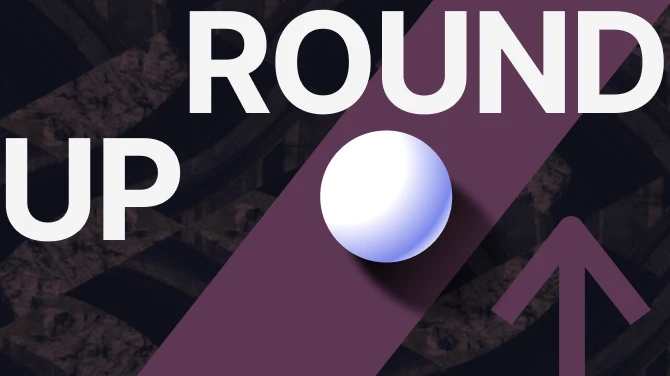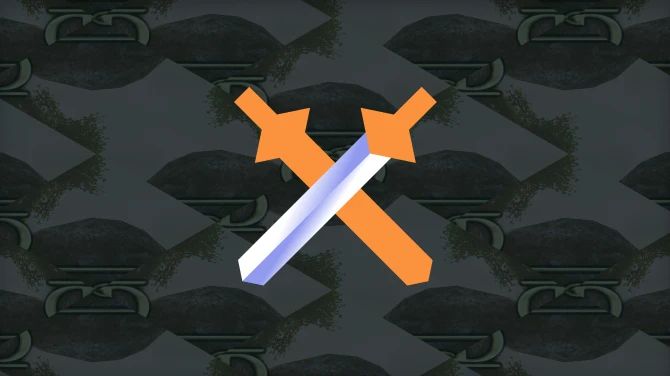About this mod
This is a tutorial for creating your own radio station in Fallout 4.
- Permissions and credits
- Introduction
- Setting Up Your Music
- Starting Up The Creation Kit
- Putting Your Sound into the Creation Kit
- Putting Your Radio into the World
- Setting Up Your Radio Quest
- (Optional) Creating a Craftable Workshop Radio
- Enabling Your Mod Through NMM
Required Tools:
- Fallout 4 Creation Kit (You will need to download via the Bethesda.net launcher. Find the link for "Bethesda.net Launcher" in the article and download)
- Audacity (For editing your sound files)
- Nexus Mod Manager
Steps
- Open your music file with Audacity.
- (Optional) Play your song and make sure you're happy with the volume. If it's too loud or too quiet, go to Effects->Amplify. You will be prompted with a slider for how much to increase or decrease the volume. A positive number means make it louder, negative means make it quieter, and 0 means do nothing. The larger the number, the more noticeable of a change the volume will be, so you should start with small numbers first (I prefer 1-5 to start off).
- Go to File->Export and navigate to your Fallout 4 directory (Probably under steamapps for Windows users) and navigate to \Data\Sound\fx\mus\radio. From here, create a new folder. It can be any name you want, but the name should be similar to the name of the mod. For example if your mod is "My Radio" you should name the folder somewhere along the lines of MyRadio.
- IMPORTANT Fallout 4 only recognizes .wav files in a 16-bit format. Save your music in this format inside the folder you just created.
Now that you have the Creation Kit started, we should familiarize ourselves with the windows that popped up. A warnings window may have popped up when you loaded Fallout4.esm, you may safely close this for now.
Object Window
The primary window we will be working with will be the Object Window. On the left, it will have categories for Actors, Audio, Character, etc. On the right is where the objects themselves will appear in a list. The default game has thousands upon thousands of objects sorted into the categories on the left. You may look around some of the categories and get familiar with how objects are displayed in the window.
Cell View Window
The Cell View Window will be next on our list. Here is where we select a location to place objects into the game. You may select a cell and double click it to load into the Render Window. Warning: Loading cells may take a long time and Windows may say it has stopped responding. This is normal.
Render Window
Finally, we have the Render Window. If you haven't selected a cell yet, it will be empty. For now we can set this to the side, but we will be using it later. The basic controls for moving the camera around is mouse 3 (press down on scroll wheel) to move the camera, shift to change the direction you are facing, and scrolling up or down will zoom in or out, respectively.
4. Putting Your Sound into the Creation Kit
WARNING: SAVE OFTEN
The Creation Kit has a bit of a reputation for being unstable. Please save often.
The first thing you'll want to do is give it an Editor ID. This will be the very first blank in the new window that pops up and tells the Creation Kit what to look for when you want to play your song. Again, you can name this anything you like, but you should name it something that pertains to your mod, such as "MyRadioSong1", without quotes.
Under the Sound table, right click->New. From here, navigate to where you stored your music and select it. The Creation Kit will then take in the sound so that it may be used in the game. You should click on the Play button to listen to the song and make sure everything worked correctly.
Finally, there will be a box called Output Model underneath the Sound table. Click this and set it to SOMStereo. Press enter or click OK to save this form.
Repeat this process for every song that you want to put into the game.
Each one should look something like this:

For the Title field, enter the name of your radio station as you want it to appear in-game. Type it again under Message Text. Click OK to save the form.

Close the Miscellaneous category and click WorldObjects at the bottom. Use the filter at the top to search for "RadioTransmitter". There will be several files here, but we want the one whose name is exactly RadioTransmitter.
Now, bring the Cell Window back up and there will be a drop down menu at the top of the window. Select the Commonwealth option and wait for it to load. You may open any cell here you want, but you should avoid placing it inside a settlement. The cell may take a long time to load. This is normal, so just be patient.
When the cell loads in on the Render Window, navigate to somewhere the player won't be able to get to, such as inside a non-enterable building or underground. Reminder: The basic controls for moving the camera around is mouse 3 (press down on scroll wheel) to move the camera, shift to change the direction you are facing, and scrolling up or down will zoom in or out, respectively.
Once you have a spot that you like, go back to the Object Window and drag RadioTransmitter into the Render Window to place it into the world. It will appear as an empty box. Double click this box to open the Reference Window. For the Reference Editor ID, fill it in with "RadioTransmitterMyRadioRef", without quotes and with the underlined part being the name of your radio.
Go to the RadioData tab and set the Radio Station number to either 87 or 88. Note: I'm not entirely sure how this works, but setting it to a high number should avoid conflicts with existing radio stations. If you can't get this to work, try experimenting with the number. Click OK to save the form, then double click again to re-open it. Check Ignores Distance Checks and click OK again to save it.

Re-open the form and you'll see several new tabs have appeared along the top. Navigate to the Quest Aliases tab and right click->New Reference Alias in the list. A large window will pop up, but we only need to fill in a few things. For Alias Name enter "MyRadioAlias" without quotes and replace the underlined part with the name of your radio. To the right of the Alias name is Display Name with a large drop down menu. Find the "RadioDisplayMyRadio" object you made earlier and fill it in here.
Under the Fill Type section, select Specific Reference and click Select Forced Reference. A small window will pop up, click on Select Reference in Render Window and double click your Radio Transmitter in the Render Window. Click OK and a Recommended Fill Type Change window will pop up. Select No on this window. Press enter or OK again to save the Alias window.

Next, click on the Scenes tab and in the box on the left, right click->New. Name it "MyRadioQuestScene" without quotes and replace the underlined part with the name of your radio station. Click on the item you just created and there will be a large blank box on the right side of the window. Inside this area, right click->New Actor and select the Alias you created earlier and press OK. A small box should appear in the blank area. Important: At the top of the scenes window will be a check mark for "Show scene links", make sure this is ticked. Also, make sure to tick "Begin on Quest Start".
Right click in the blank area and select Add Phase at End and a box will appear. You will need to do this repeatedly for every song you have. The total number of boxes you need will be the number of your songs plus 2. For example, if you have 3 songs, you will have 5 of these boxes.
Go to the very last Phase and right click->New Action->Start Scene. A window will pop up and in the box in the middle, right click->New. Another window called Scene Info will pop up. There will be a drop down menu called Scene, select the name of your scene (it should be the only option) and click OK on that window and OK on the Start Scene Action window. Click OK on the quest window to save it and re-open it. A blue line should appear going across all the Phase boxes on the Scenes tab. If it's not there, make sure you have Show Scene Links ticked at the top.
Go to the first Phase box and right click->New Action->Timer. You can leave the name field blank if you want. Go to the box called Max Seconds. This is how long of a delay there will be between the end of one song and the start of another. You can enter any time you want here, or leave it 0.00 so there will be no delay between songs. Click OK to save it.
For the remaining blank Phases, right click->New Action->Radio. Here you should name each one to be the name of one of your songs, for example "MySong1", "MySong2", etc. (without quotes). Click on the Select Sound button and find the name of the sound files you created at the start of this guide. You will need to repeat this step for every song you have, one for each Phase. At the end you should have one Phase at the start for the timer, one Phase for each of your songs, and the final Phase is the Scene Start.

Click OK to save the quest and then save your mod with the Creation Kit. We are done with the Creation Kit for this tutorial. At this point your mod should be good to go. All that's left to do is enabling it through Nexus Mod Manager.
(Note: The pictures may be too large for Nexus to display in-page. If you can't see all of it, right click and view image source. Exact menu may vary from browser to browser)


Now, we're going to need to create the object that allows the radio to be crafted in the workshop. Still under All, search workshop_co_radio and duplicate it. Change the ID to "workshop_co_MyRadio", replacing the underlined part with the name of your radio. To the right will be a Created Object drop down menu. Find the MyRadioReceiverOff you made earlier and select it here. Finally, the description box is what will be displayed on the in-game workshop UI. You can change it to anything you like, but I highly recommend just changing the name of the station here to the name of your station.

To enable mods on your game for PC, follow the following steps:
1. Navigate to your Documents\MyGames\Fallout4 folder
2. Open Fallout4prefs.ini and add the following lines of code
[Launcher]:
bEnableFileSelection=1
Additionally, you will need to also edit Fallout4.ini and change the line that starts with sResourceDataDirsFinal to
sResourceDataDirsFinal=STRINGS\, TEXTURES\, MUSIC\, SOUND\, INTERFACE\, MESHES\, PROGRAMS\, MATERIALS\, LODSETTINGS\, VIS\, MISC\, SCRIPTS\, SHADERSFX\
You may or may not have to edit your Plugins.txt file (located in C:\Users\<yourname>\AppData\Local\Fallout4) and add an asterisk to the name of your mod. Nexus Mod Manager should do this automatically for you, but if you are unable to get things working you should try this step.
And that's it! This is as comprehensive of a guide I could make for creating your own radio station in Fallout 4. Got questions or comments? Feel free to post them here or on my steam profile and I'll get back to you as soon as I can. If you found this tutorial helpful, please consider endorsing, and if it wasn't helpful, please leave a comment on why and I'll take a look at what can be improved.










